Caorle, located in the North Adriatic, halfway between Venice and Trieste, has a population of about 11,000 inhabitants. The territory extends for about 400 Kmq, largely consisting of agricultural land and lagoon. Thanks to these characteristics there is considerable agricultural production: corn, orchards and vines. In the lagoon part fishing is developed. The inhabited center stretches for about 6 km of coastline. It borders South and Southeast with the Adriatic Sea. The rest is surrounded by rivers, canals and lagoons.
The architecture of Caorle is made up of the old town, characterized by Venetian style coves and fields. Noteworthy is the Duomo and the Bell Tower, original and unique for its shape. Caorle, as well as in architecture, preserves its historicity in the city museum with remarkable and precious archaeological finds found in the ground and at sea. The city is located in two directions, towards the Levante and the Ponente. To the east lies a long avenue bordering the sea, immediately the hotels and other housing facilities. In the Ponente Coast, by the sea, a pedestrian avenue with hotels, and the rest of the houses. The architecture assumes the same characteristics as the Levante area. In North-West of Caorle, a few years ago, the Port has been built, allowing the landing of hundreds of boats of varying magnitude.
Caorle has important sports facilities: football stadium, sports hall, tennis courts, golf courses and swimming pools. Accommodation facilities for tourists are: hotels, restaurants, campsites, there is no possibility of being accommodated in a farm holiday center. The lagoon reserves an interesting alternative itinerary for the guests of Caorle. The possibility of hiking in small boats or small boats in the Laguna allows you to discover the richness of this environment. You can visit the fishermen’s casings, still kept in traditional fashion, with fishing gear.
What to see…
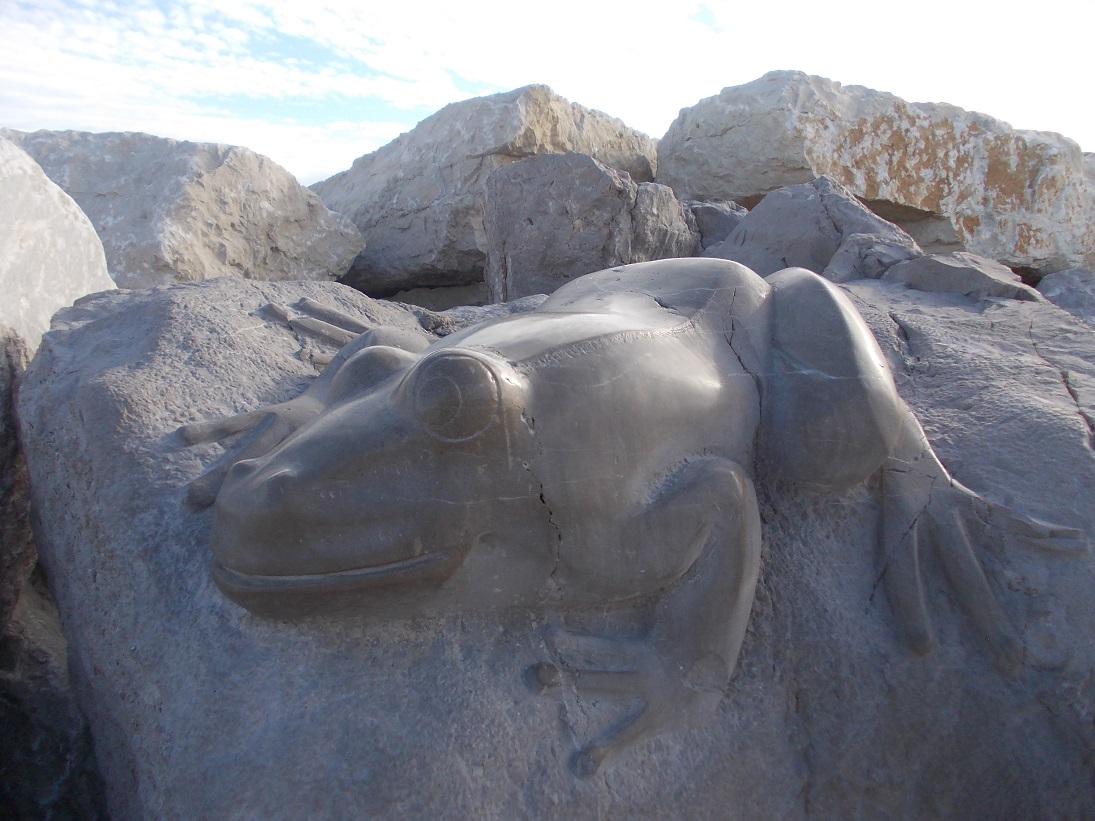 Live cliff
Live cliff
A dolphin, a seagull, a crocodile, a sun, a bell tower, a sailor, a mermaid, a screaming man … These are the fantastic creatures that take shape at the Viva Reef of Caorle, in front of the Madonna dell’Angelo Sanctuary, popularly known like the Madonna dell’Angelo. Since 1993, sculptors around the world come every two years to leave an open-air opera.
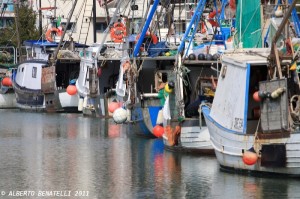 Harbour of Caorle
Harbour of Caorle
Remain unchanged over time, the Caorle fishing port is one of the most characteristic places in the seaside town. The port houses fifty boats that depart at dawn and fall into the afternoon. Here you can breathe a serene atmosphere and you can immediately understand the strong connection of Caorle with fishing and the sea. By day it is easy to find some fisherman by setting up the nets, washing the boat, or selling fish. A photo with the boats reflecting its bright colors in the water should not miss the travel diary.
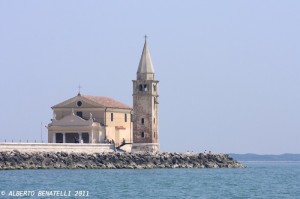 Madonnina of the sea
Madonnina of the sea
“In the frightening flood of December 31, 1727, the water went up to this cross (1,60 cm high) without a drop entering the sanctuary.” The sentence reads at the entrance of the Sanctuary of the Madonna dell’Angelo, for the corsets, Madonna of the mother. Caorle people are very close to her little church that seems to float on the sea. In the whole there is a painting that tells the tradition of Our Lady: five fishermen found a statue and with the help of their nets they took her to the beach. They called her the Madonnina of the sea.
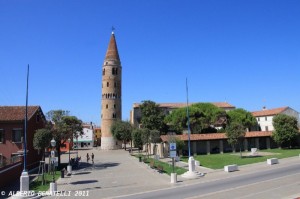 Cathedral and bell tower
Cathedral and bell tower
The Cathedral of Caorle is one of the most important and full of small town history buildings. Built in 1038 above the ruins of a early Christian basilica, it was a cathedral for years until 1819. We remember that the early Christians in the area prayed right here. This is due to the transmutation of the inhabitants of Concordia Sagittaria with destination Caorle, escaping the barbaric invasion at the end of the Roman Empire. In front of the Duomo, it faces the majestic cylindrical belfry, 44 meters high and for centuries, a symbol of Caorle.
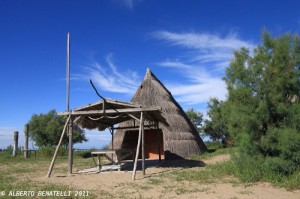 The “casoni”
The “casoni”
Visiting the Casoni of Caorle is a unique opportunity to travel in time and in the silence of the lagoon. Worth to take a stroll down to the fishermen’s island. Here are some wonderful specimens, big and small. The houses are the typical fishermen’s house that, together with the family, escaped from the war and retreated from these parts. A large central fire warmed the kids in the cold winter nights while the hosts fished in the lagoon. Today it is possible to visit them and listen to the stories of the old cauldron wolves.
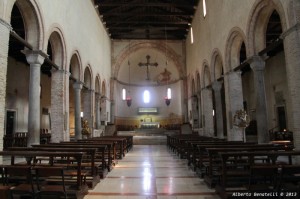 Frescoes
Frescoes
In the outer porch of the Caorle Cathedral canonical wall, there are some frescoes left by the ancient church of San Rocco, built after the devastating 1866 epidemic. San Rocco, saint of the plague protector, could now be the protector of the bride and groom . This historic place is one of the lovers who first photograph before the frescoes, but after swearing to love for good and evil in the parish of the Duomo or the Sanctuary of Our Lady of the Angel.
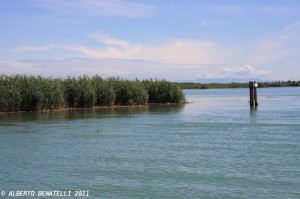 Excursions
Excursions
Below is a list of the main activities that can be reached in Caorle. You can ask us directly information, we will be happy to provide you with all the support you need to spend your holiday best.
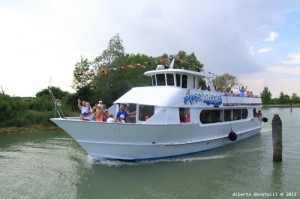 Excursions to the Lagoon
Excursions to the Lagoon
Magical excursions in the lagoon of Caorle. Possibility to excursion to the motonave (Motonave Arcobaleno) or to the typical boat, the Bragozzo “Serenissima”, starting from Caorle.
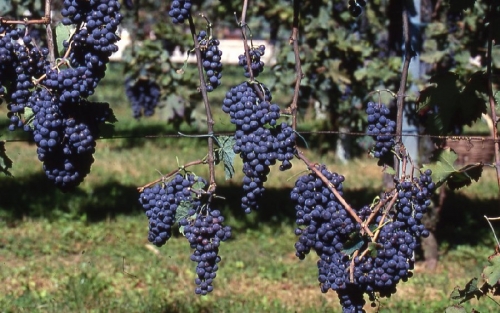 Wine Road
Wine Road
The Province of Venice has a “heart” tied to wine and typical products: the D.O.C. Lison Pramaggiore. Just a stone’s throw from the characteristic town of Portogruaro, just a few miles from Porto Santa Margherita, you will find a wine-producing country of the Dogi, which gave birth to the Wine Route to invite you to meet and visit it. More info: Wine Road.
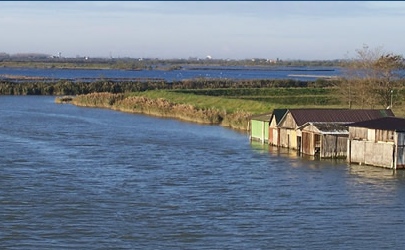 Old Valley
Old Valley
Guided tour to the MAV (Museo Ambientale di ValleVecchia), museum set up in a former drying house recovered with a valuable restuaro. Bicycling guided tours.
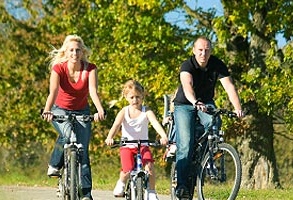 Cycle routes
Cycle routes
Cycle routes to discover the natural resources that Duna Verde and the nearby towns such as Caorle and Porto Santa Margherita can offer. Paths for beginners and the most trained.
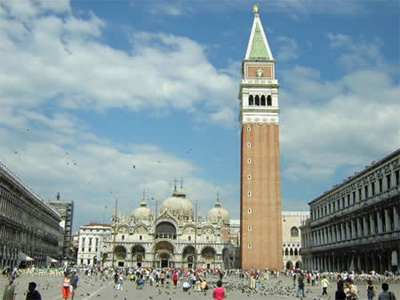 Visiting Venice
Visiting Venice
Venice is easily accessible both by public transport and by car. From Duna Verde you can reach Punta Sabbioni in 15 minutes, park comfortably and from there take the motorboat that will take you directly to the center of Venice: at Piazza San Marco. Of course if you prefer you can also reach Punta Sabbioni by bus, there are two very well connected areas both by night and by day.




